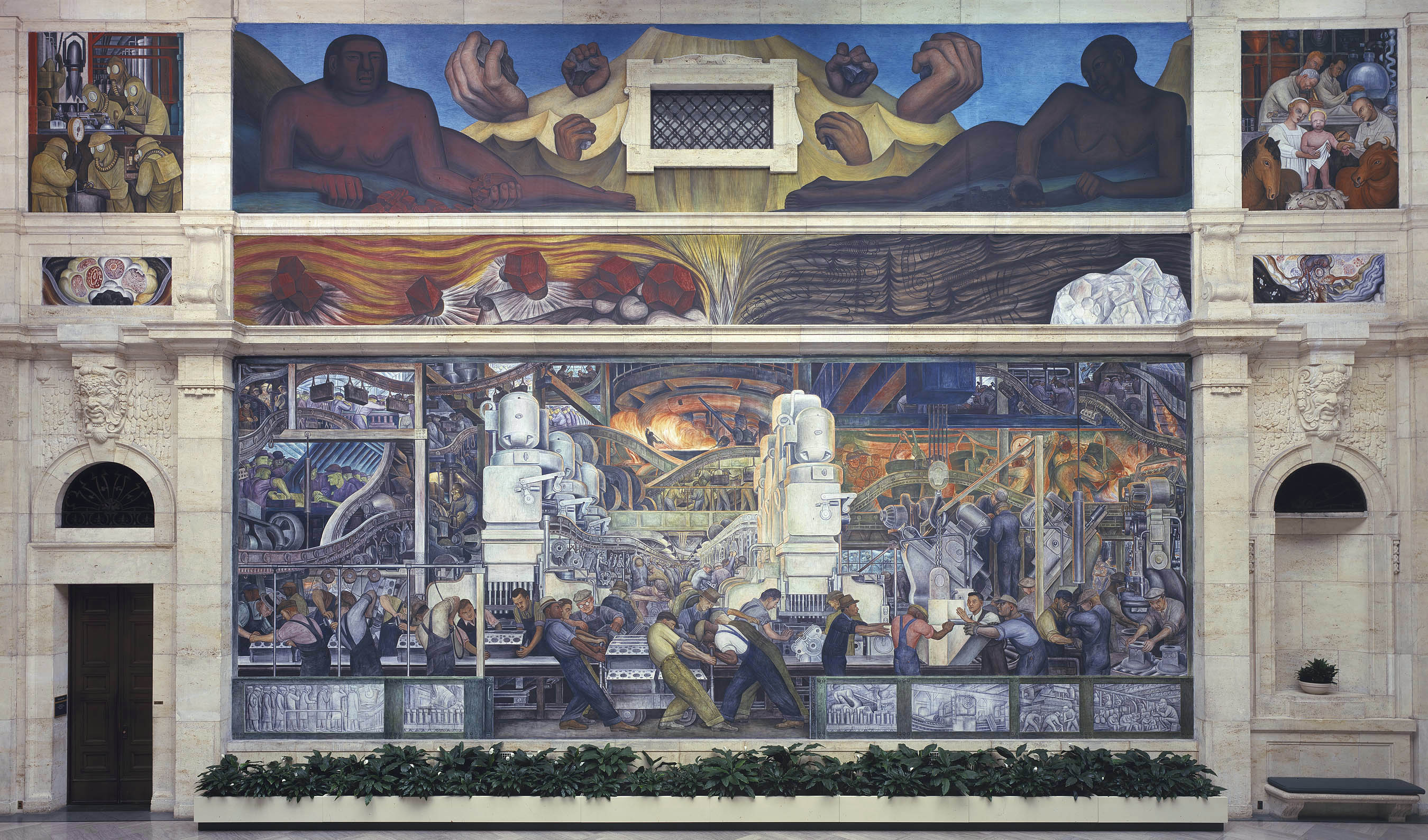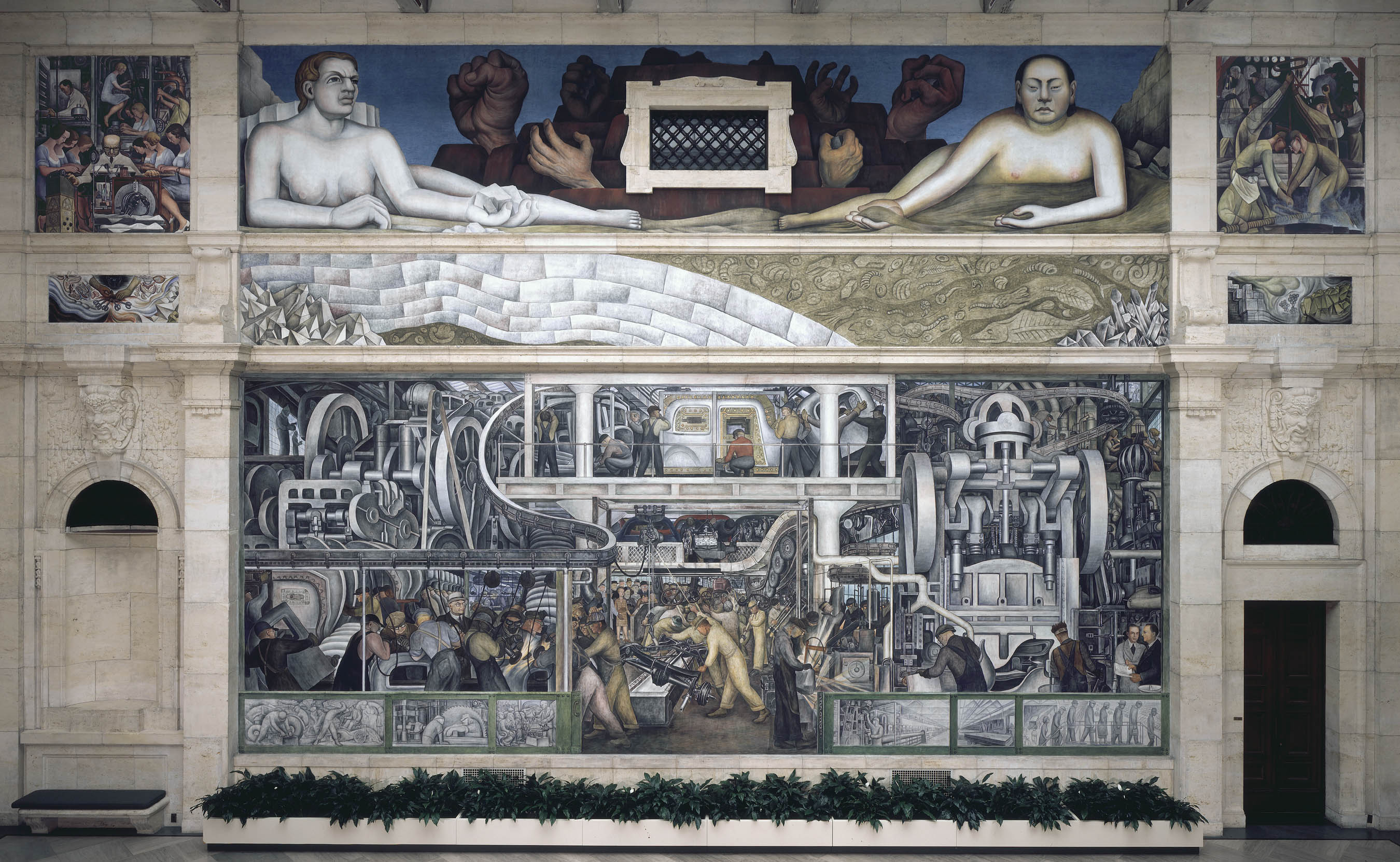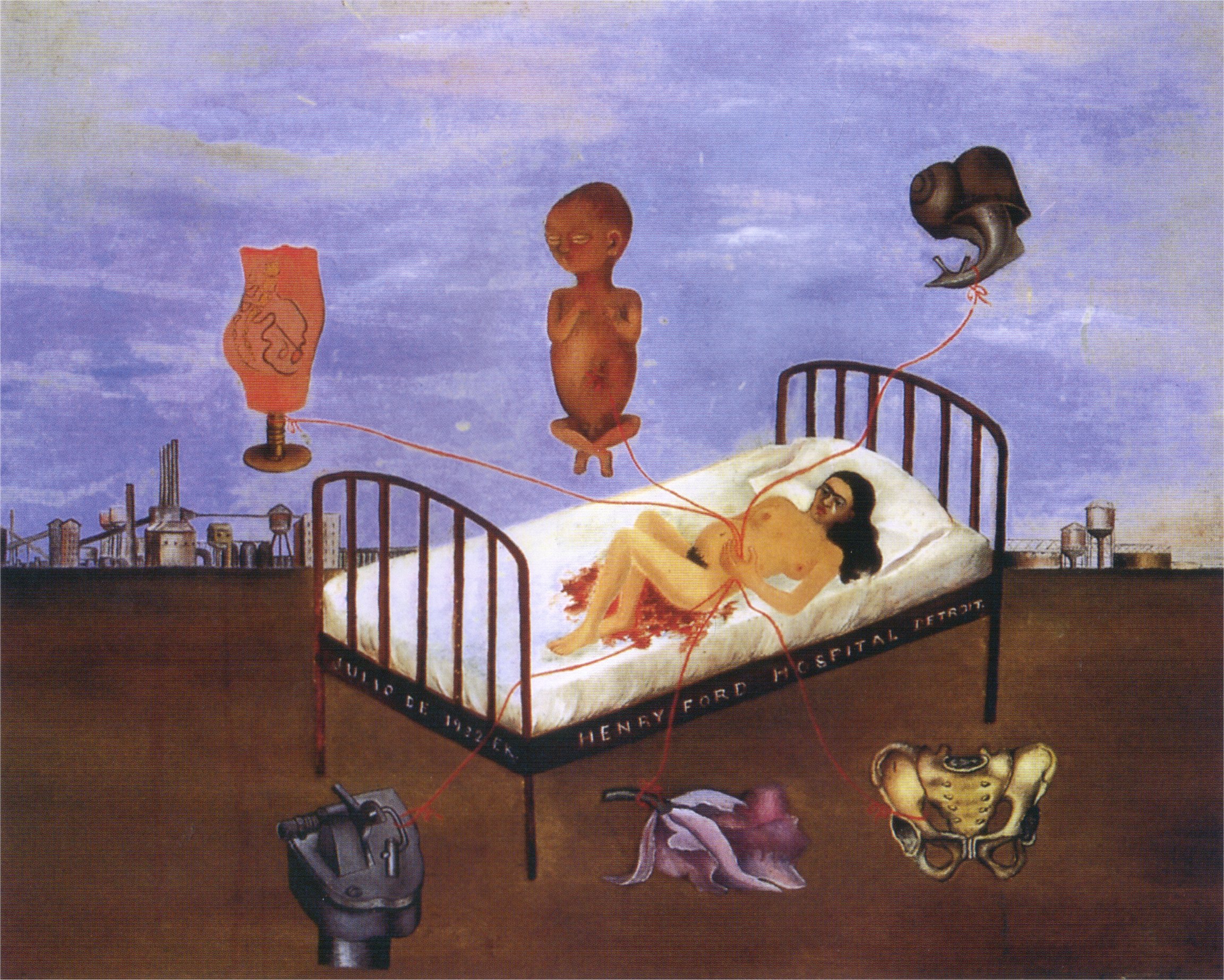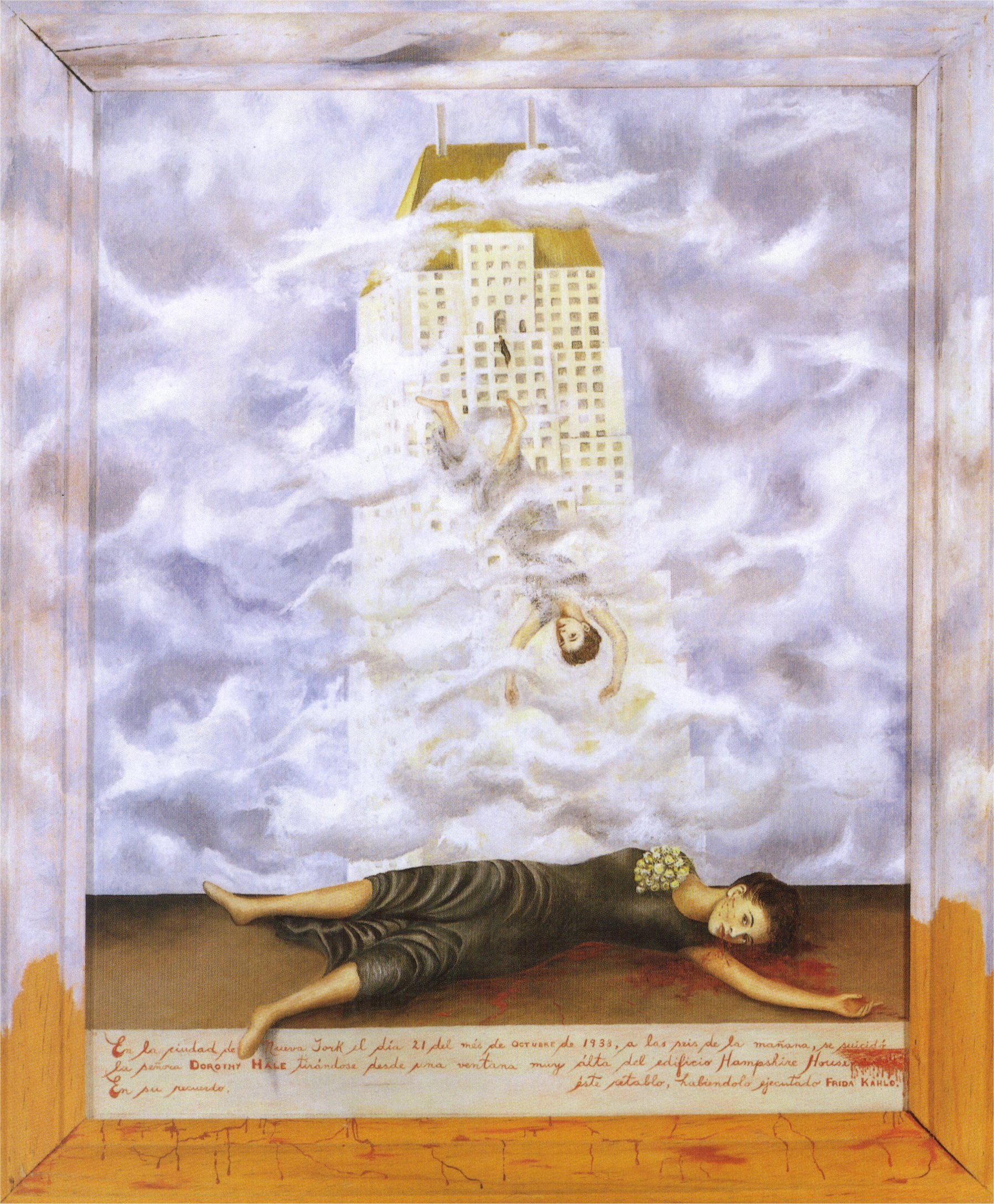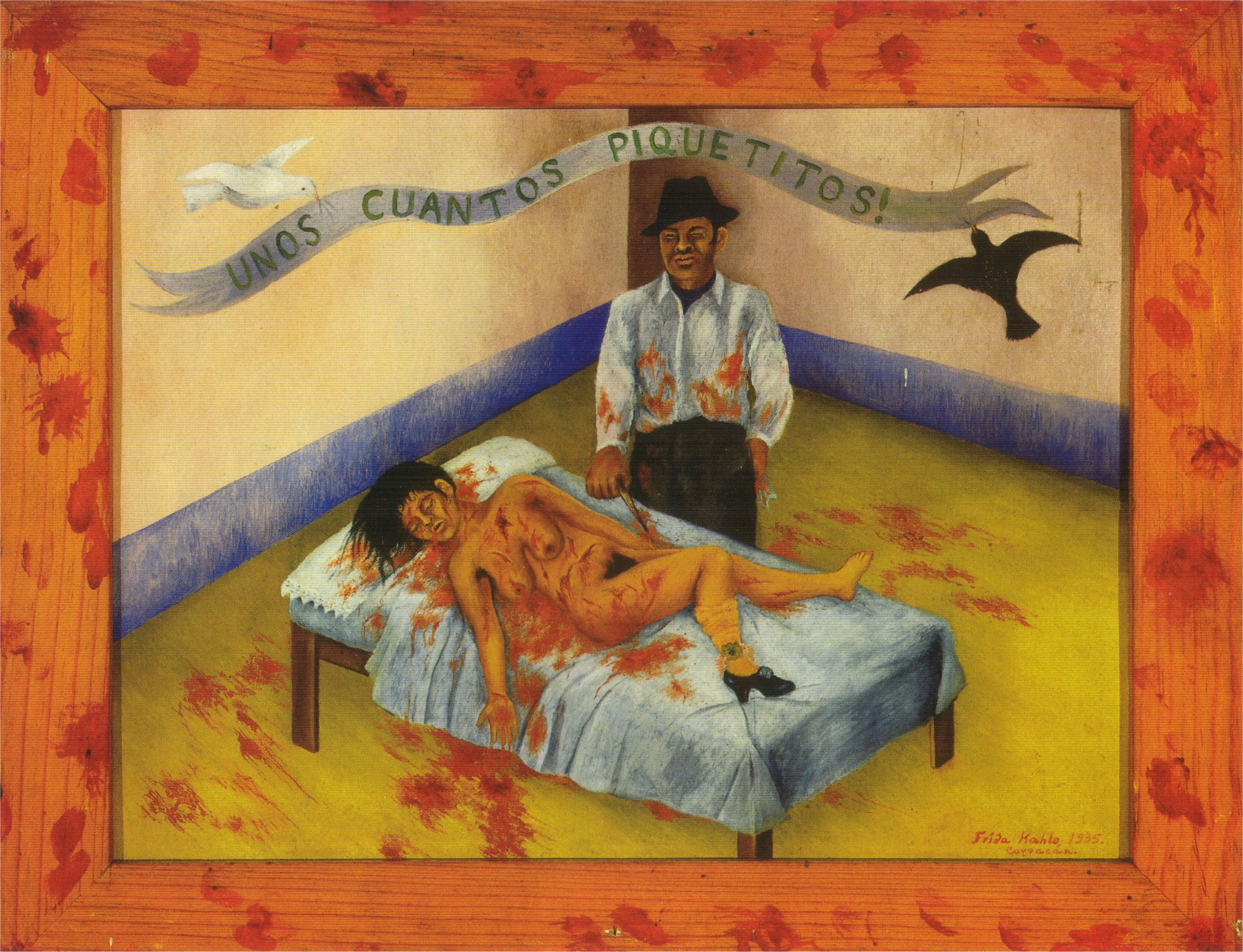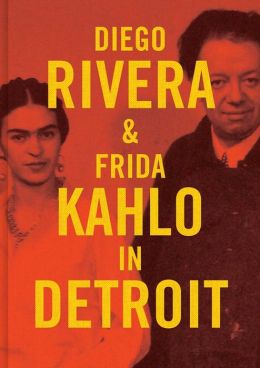The Detroit Institute
of Arts (DIA) presents an exhibition featuring two of the most fascinating
artists of the 20th century. Diego Rivera and Frida Kahlo in Detroit, on
view March 15–July 12, 2015, explores the tumultuous and highly productive year
that Mexican artists Diego Rivera and Frida Kahlo spent in Detroit. The DIA is
the exhibition’s only venue.
The exhibition has been organized by the Detroit Institute of Arts. Generous support for the exhibition has been provided by Bank of America. Additional support has been provided by the National Endowment for the Arts and the Henry and Mary Ellen Bellaimey Family Foundation.
This is the first exhibition to focus on their time in Detroit, a period during which each artist made significant career breakthroughs and where Rivera painted his groundbreaking Detroit Industry murals.
The exhibition has been organized by the Detroit Institute of Arts. Generous support for the exhibition has been provided by Bank of America. Additional support has been provided by the National Endowment for the Arts and the Henry and Mary Ellen Bellaimey Family Foundation.
This is the first exhibition to focus on their time in Detroit, a period during which each artist made significant career breakthroughs and where Rivera painted his groundbreaking Detroit Industry murals.
“Rivera considered Detroit Industry, recently designated a national historical landmark, as his finest mural cycle,” said Graham W. J. Beal, DIA director. “It shows the artist at the height of his powers. For Frida Kahlo, on the other hand, the works she produced while in Detroit can be seen as the beginning of her development as a mature artist with her own distinct—and distinctive—style.”
Between April 1932 and March 1933, Rivera created one of his most accomplished murals—Detroit Industry—
North Wall – Detroit Industry Mural – Diego Rivera
South Wall – Detroit Industry Mural – Diego River
on the walls of what was then a garden courtyard
at the recently opened new museum building.
At the same time and largely
unnoticed, Kahlo developed her now-celebrated artistic identity. By including
works before, during and after their time in Detroit, the exhibition provides a
context for the impact Detroit had on each one’s career.
Included in the 38 works by Rivera are his preparatory drawings for Detroit Industry. Not shown for almost 30 years, these to-scale drawings demonstrate Rivera’s vision for the murals: a synthesis between Mexico’s spiritual and political values and United States industrial might. Among the 26 works by Kahlo are those she created in Detroit, which reveal the emergence of her personal artistic style.
Before coming to Detroit, Rivera’s and Kahlo’s art centered on Mexican politics, society and identity. Rivera focused on farmers, laborers and indigenous peoples, whom he aimed to bring to the center of Mexico’s history and national identity. Kahlo referenced folk art motifs, believing that indigenous and folk culture was an authentic expression of Mexico’s heritage.
While in Detroit, Rivera worked primarily on the 27-panel Detroit Industryfrescos, which depict the complex interplay of natural resources, manufacturing processes and workers at the Ford Motor Company River Rouge plant, as well as other Detroit’s industries. Rivera spent months sketching at the Ford plant and was fascinated by the then state-of-the art factory. He conceived of the murals as promoting the understanding of the working class and American engineering genius.
Rivera wove ancient Mexican cultural beliefs and their relationship to the modern world into the murals to illustrate his concept of the interconnectedness of the earth’s resources and modern technology. An example is his depiction of the stamping plant, which is modeled after the Aztec creator deity Coatlicue.
For Kahlo, Detroit was a time of deep emotional turmoil, as well as growth as an artist. Shortly after arriving, she suffered a devastating event: the loss of her pregnancy. That experience is the subject of one of her most affecting paintings,
Henry Ford Hospital,
in which she expresses her physical and emotional pain in the aftermath of that event. The foreground shows Kahlo lying in her hospital bed, with deeply personal surreal images floating around her.
Kahlo continued to define herself mostly through self-portraits that reflected her feelings about her time in Detroit. She was unhappy and wanted to return to her Mexican roots.
Self-portrait on the Borderline between Mexico and the United States
shows Kahlo standing in the middle, with references to Mexico’s ancient traditions on her left and symbols of U.S. industry on the right. While there are similarities to Detroit Industry, Rivera’s overriding theme is the synthesis of the Americas, Kahlo portrays them as two separate realms—clearly favoring Mexico.
When the artists returned home, Rivera continued to paint murals and resumed his interest in portraying everyday people and indigenous Mexican heritage. Good examples are his paintings
Man Loading Donkey with Firewood
and Zandunga, Tehuantepec Dance.
Kahlo established herself as an artist in her own right and continued painting self-portraits using iconography she developed in Detroit.
Self-portrait with Cropped Hair, a commentary on gender, and
Self-portrait with Monkey,
where the monkey is thought to be a surrogate for the child she never had, are two such paintings.
When Kahlo painted other women, she often showed them as weak or suffering, such as
Suicide of Dorothy Hale
and A Few Small Nips,
which shows a woman who had just been stabbed to death by her husband. Kahlo’s own anguish and sense of suffering come through in both paintings.
A 248-page hard-cover catalog ($50) will accompany the exhibition, available in the DIA Museum Shop. Publication of the catalog is supported by Futhermore: a program of the J. M. Kaplan Fund.
The DIA offers a variety of related programs and dozens of community groups and other organizations are also hosting related programs, which are posted at www.ixiti.com/diegoandfrida.
